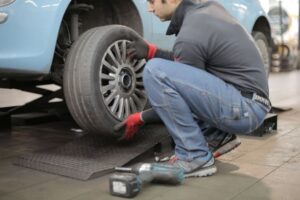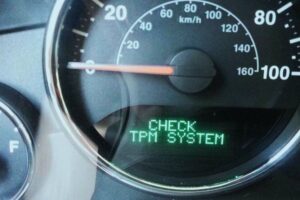Changing a tire will be difficult if it’s your first time. What more if the wheel is stuck? Do you know what to do if the tire won’t come off? How to remove it?
Usually, a tire won’t come off quickly because of the buildup of corrosion on the wheel. This will happen if the tire’s position on the wheel has not been changed for a long time. Corrosion will build up between the mounting surface of the hub and the wheel because it becomes sticky. It is the glue that causes the wheel to bond with the hub.
The easiest way to remove the tire is to spray and soak a corroded lug nut with a lubricant such as WD-40. This will break the lug nut from being permanently stuck in its place. Spray the lubricant at the base of the nut and let it work for as long as it takes. Give the lubricant enough time to work between and through the nut threads and the wheel hub.
Read on to learn more about why a tire won’t come off and the different methods to remove it.
What to Do If Your Tire Won’t Come Off?
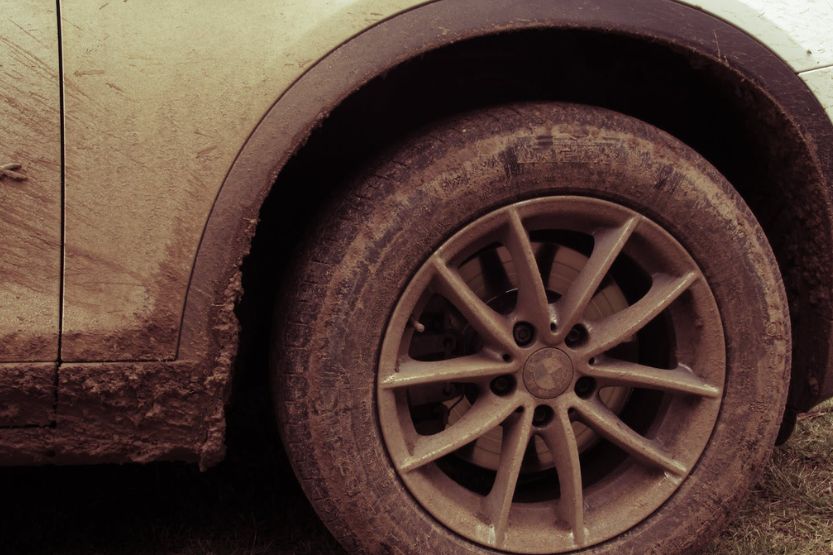
The most common reason a tire won’t come off quickly is the buildup of corrosion on its wheel. This happens if the tire’s position on the wheel has not changed for a long time.
The corrosion between the hub’s mounting surface and the wheel has become so sticky that it now acts as the glue that fastens the hub to the wheel.
The easiest way to remove a sticky tire is to lubricate its rusty lug nuts using an oil-based lubricant like WD-40. Spray it on the base of the lug nut and allow it to do its work. Give it enough time to work through and between the nut threads and the wheel hub.
Another common cause of a stuck tire is a damaged wheel bearing. Bearings are designed to facilitate the rotation of wheels. But if the wheel bearing has completely failed, it will prevent the wheel from turning instead of making the rotation easier.
What Causes a Tire to Get Stuck?
Perhaps your tires have worked perfectly since you got them from the dealer. This means you haven’t had your tires changed or serviced yet. Aside from checking its air pressure regularly and inflating it as it becomes necessary, there are some things that you should do.
So, the tires’ positions on your car’s wheels have not changed for a long time. If your usual drives take you to coastal areas and muddy and wet roads, your tires will likely stick to their wheels.
Why? Moisture from these types of road surfaces encourages corrosion on the metal surfaces of the wheels, including the hubs and the lug nuts. If moisture is not removed from metal surfaces, they will rust. Soon, you will see the formation of corrosion on these metal surfaces.
This is seen on the lug nuts and wheel hub threads. If given enough time, corrosion acts like glue that fixes one metal surface to another.
How Can I Remove a Stuck Tire?
Using ordinary car tools and if you know how to do it and have done it several times, you won’t have any problem changing a tire. However, how will you do it if it is glued to the wheel for some reason? Here are some tips:
1. Soak the Corroded Metal With Oil
Removing a stuck corroded metal from another metal is very difficult if you will only use brute force. You can even damage the metal part if it is small such as the lug nuts on tire wheels. So, what you need is help from lubricating or penetrating oil.
This is the easiest way to unstuck a lug nut from an immovable wheel. Soak the lug nut with lubricating oil such as WD-40. Spray the oil at the base of the nut and allow it to stay there for several minutes or as long as it takes so it can do its work.
2. Increase the Torque
If you can’t remove a lug nut with the normal tools that you are using, try increasing this tool’s torque by increasing its length. This will give you a more mechanical advantage and increase the torque you need to rotate the stubborn nut from its place.
So, insert a lengthening arm like a piece of pipe into the socket that you are using. If you try this method, you will add as much as two to three times the torque you use.
If the lug nut is not too fused into the wheel hub threads, it will give way, and you can remove the tire on the wheel.
An alternative way is to pound the arm of the socket that holds the sticky lug nut. In this method, you will try to shake off the initial stickiness of the metal so it will move a little. If it moves just a bit, there’s a chance you can unstick the tire free.
3. Use the Right Socket
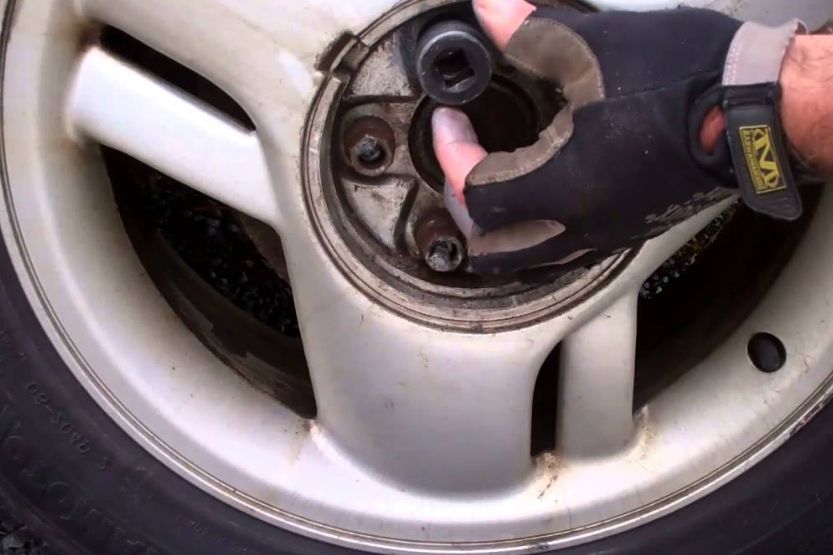
If you are using the wrong socket size, you won’t be able to move a stuck lug nut. You may even destroy the nut’s edges or corners, making removing it harder. So, choosing the right size socket before freeing a stuck lug nut would be best.
Many socket wrenches have the same size markings on them. However, there are some minute differences between several brands, even if they are marked as the same size.
So, be sure to try the fitness of the wrench first before attempting to use it on your stuck lug nut. It must be tight enough and able to hold the nut firmly.
4. Never Use Power Tools
If you need to use strength, go for power tools. However, if rust caused the lug nut to stick solidly to the corroded wheel studs, you can’t use an impact wrench to get the lug nut out.
Corrosion has already weakened the studs, so using a power tool may break the studs, and you will have another more difficult problem to solve.
5. Leave the Problematic Nut but Loosen All the Other Nuts
If there’s only one wheel nut that is difficult to unscrew, leave it but loosen all the other nuts that are easier to move. They should not be so loose that they can fall to the ground. Ensure your car is parked on a flat surface before starting this procedure.
Now, start your car and drive slowly a few feet forward and then back to return to your original position. Jack up your car and see if that frees up the stubborn nut. If it is still stuck, repeat this procedure a few times more until the stubborn nut moves.
6. Kick the Tire
Kicking the tire can loosen the corrosive materials that have formed in between the threads of the nut and the wheel stud. This is a practical method most drivers use with tires and wheels that can’t be moved:
- Park your car on a safe and flat surface.
- Kick the problematic tire with your foot and then rotate the wheel.
- Then jack up your vehicle.
- Rotate the affected wheel and kick its tire once more.
- Now, try to check if you can move the stuck nut. If not, try kicking the tire a few times more. Hopefully, this will eventually force the stuck nut to give way.
7. Use a Pry Bar
Before trying this method, be sure your vehicle is safely parked on a flat surface with no traffic:
- Insert a pry bar into a spot on the wheel where it meets the iron axle. You should try the most accessible place to insert the pry bar. But don’t force it inside the wheel.
- Jack up your vehicle and try loosening the wheel from the hub. You should be able to free up the wheel from the hub with a few tries.
8. Use a Heavy Hammer and a Piece of Lumber
If you have used the other options and the tire still holds on to its place, try using a heavy hammer and a piece of lumber. Again, park your vehicle on a safe, flat surface before using this procedure.
The lumber you need to use is a piece of 2×4. You should put it in between the tire and the wheel. Now, jack your car up, pick up the hammer, and get under your vehicle. With the lumber secure in its place, hit it hard with the hammer.
Hopefully, this action will free up the stuck tire from the wheel. If so, carefully remove the tire from the wheel. This is a dangerous procedure, so ensure you have taken all the necessary safety precautions.
Again, what to do if your tire won’t come off? If you have a tire that won’t come off due to rust, it is best to ask a professional for help.
What to Do After Removing a Stuck Tire?
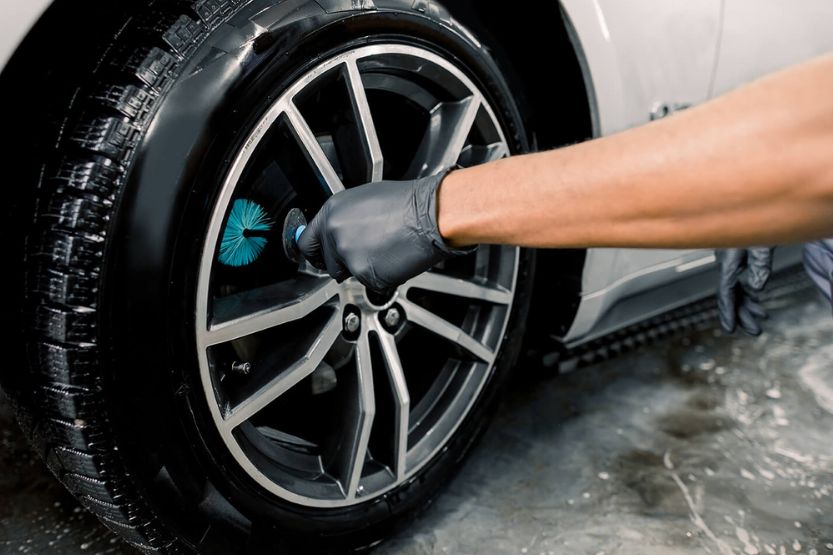
If you have successfully removed the tire from its wheel, you must do one more thing to ensure it won’t get stuck again. How can you prevent the tire from being bonded again to its wheel?
1. Protect the Wheels, Studs, Etc. from Rust
Since you already know that corrosion is the primary cause of this problem, you must protect your wheels, their studs, the wheel hub, and the tire lug nuts from rust.
2. Use Sandpaper to Clean the Wheel
The best way to do this is to keep the internal parts of your wheel always clean. If you can, paint the internal components of the wheel that are prone to rust as well.
So, after removing the tire from its wheel, clean the rim, the wheel studs, the lug nuts, and all the other internal parts of the wheel. You can use sandpaper for metals to clean them. After they are all cleaned, apply a layer of grease on all of them.
3. Apply Antifreeze to Prevent the Parts from Sticking
Applying antifreeze to the affected parts will also prevent them from sticking together. If you can paint the parts you are allowed to paint, do it. This procedure will address the corrosion problems that the tire and the wheel will encounter in the future.
In Closing
The usual reason you can’t change a tire that quickly is a buildup of corrosion on the wheel. If the tire’s position has not been changed for a long while, it will not come off soon from the wheel when you need to remove it.
The reason is that the buildup of corrosion between the wheel and the hub’s mounting surface became very sticky. It acts as the glue that bonds the wheel to the hub. Though difficult, you can unstick the tire from its wheel with the correct procedure.



![Brake Lights Won’t Turn Off [Causes and How to Fix] brake lights wont turn off](https://roadsumo.com/wp-content/uploads/2021/05/brake-lights-wont-turn-off-150x150.jpg)


![Car Won’t Turn Over but Has Power [Causes and How to Fix] car wont turn over but has power](https://roadsumo.com/wp-content/uploads/2022/04/car-wont-turn-over-but-has-power-150x150.jpg)

